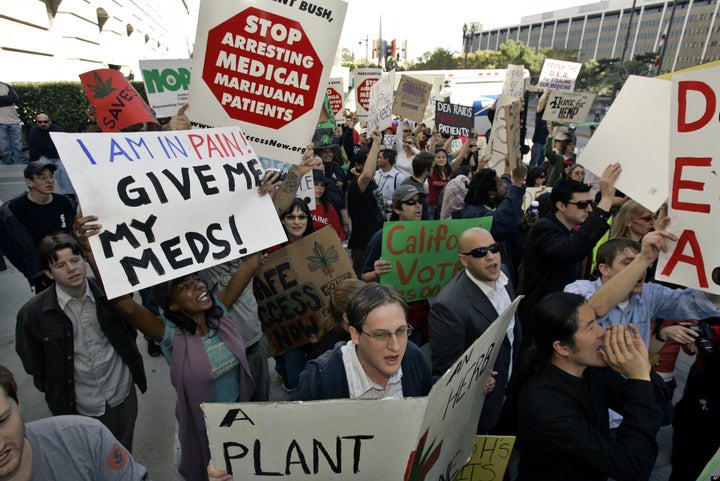
The Colorado legislature has been criticized for not passing legislation regarding marijuana impairment and driving. However, a subsequent review of scientific evidence regarding marijuana and driving suggests that they were wise to vote against implementation of the suggested policy in favor of further research.
In May, the Colorado legislature failed to pass House Bill 1261, which would have created a "per-se" limit of 5 nanograms of THC per milliliter of blood, similar to the 0.08 limit which currently exists for blood alcohol content (BAC). While supporters deemed such a limit a necessity, opponents were not convinced by the evidence presented that 5 ng/ml was an appropriate limit, and called for more research on the subject.
In response to this measured decision to call for more research, Colorado Attorney General John Suthers issued the following statement:
It is dumbfounding that the Colorado Senate could fail to pass a per-se marijuana bill... The Senate's vote yesterday exhibited not only a lack of concern for the safety of Colorado drivers and pedestrians, but also an inability to lead. The fact that some senators were succumbing to pressure from the marijuana industry while others may have been concerned the per-se limit was too high is no excuse for complete inaction on such a critical public safety issue. This is yet another public policy failure by the General Assembly to enact appropriate marijuana policies in Colorado.
Despite AG Suthers' tantrum, lawmakers' rejection of the bill was not an example of legislative impotence. Rather, it was a healthy exercise of deliberative democracy: a public policy success. While AG Suthers' statement suggests any limit is better than no limit, such a limit would be all that stands between law-abiding citizens and criminal sanctions. Accordingly, we should be assured by scientific evidence that such a limit would accurately represent the border between sobriety and impairment. However, scientific evidence suggests that this is not the case.
For instance, an international working group on drugs and traffic safety recently presented evidence suggesting that levels of blood THC content below 10 ng/ml did not present an increased risk of accidents. The same group concluded that blood THC content between 7-10 ng/ml was roughly equivalent to 0.05 BAC, well below the legal limit.
Additionally, the group notes that medical marijuana patients develop an increased tolerance to the inebriating effects of the drug, as well as compensating for potential inebriation by slowing down and increasing distances between themselves and other vehicles. In stark contrast, heavy drinkers actually become more sensitive to alcohol's inebriating effects (a reverse tolerance), and experience lowered inhibitions, creating high potential for dangerous driving. Therefore, marijuana impairment and alcohol impairment are very different, and methods of measuring impairment that work for alcohol may not be appropriate when applied to marijuana.
Moreover, a 2006 Australian study compared performance in driving simulations with blood THC content 30 minutes after smoking marijuana and again 80 minutes after smoking marijuana. The researchers found that blood THC content peaked immediately after smoking at approximately 70.59 ng/ml and then began to decrease steadily. Thirty minutes after smoking, performance in driving simulations was not significantly impaired, despite participants' average blood THC content of approximately 10.32 ng/ml.
Paradoxically, performance in a driving simulation was significantly impaired 80 minutes after smoking, when blood THC content had dropped to approximately 4.85 ng/ml. In this study, impairment actually seemed to increase as blood THC content decreased. This study provides further evidence that marijuana impairment should not be judged on the basis of blood THC content.
Additionally, separately measuring blood THC content and blood alcohol content ignores the synergistic effects that occur when the two substances are combined. Research suggests that drivers below the per-se limits for both alcohol and marijuana may still be significantly impaired due to the synergistic effects of the two substances.
If per-se limits are an inaccurate measure of marijuana impairment and do not take into account the synergistic effects of marijuana and alcohol, are there alternative methods that might be more appropriate?
Currently, the best alternative to per-se limits may be Standardized Field Sobriety Tests, or SFSTs. These tests involve the observance by a trained medical or law enforcement professional of a driver's motor and cognitive skills. Unfortunately, SFSTs have been shown to accurately predict marijuana impairment in only 76.3 percent of drivers. This imprecision makes any case judged by SFSTs alone vulnerable to legal contest.
However, since Colorado public servants such as AG Suthers are primarily concerned with the implementation of a just policy that would err on the side of the accused -- and are not merely concerned with prosecuting marijuana users -- surely they would concede that the use of SFSTs is the most reasonable of the available options in the short term.
While we wait for improved methods to be developed, using SFSTs to judge marijuana impairment would at least provide an approximate measure of what is actually important while driving: an individual's ability to control their mental and physical faculties -- regardless of what their bloodstream may contain.